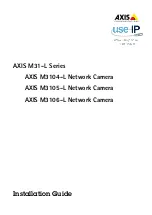
CHAPTER 10. QoS
202
© SAMSUNG Electronics Co., Ltd.
To start off with, we allocate(10 * BCR) bytes of buffering for the entire
interface. This provides a decent amount of burst tolerance of(9 * Ts = 45) ms.
the allocation in terms of buffers would be(10 * BCR / average_packet_size),
where average_packet_size = 100 bytes. Since the sum(bcr) of all classes
makes up the BCR of the interface, each class will have an average of(10 * bcr
/average_packet_size) buffers.
A class needs at least bcr bytes of buffering to support the CR and bbr bytes to
support BR. We reserve(6 * bcr) bytes or(6 * bcr / average_packet_size)
buffers, so that the class can not only support its CR but also has quite a few
extra buffers that can provide burst tolerance or, support excess bandwidth up
to 6 times the CR. However, we limit the amount of reserved buffers for a
class to(2 * bbr / average_packet_size), because this amount is not only
enough to support the BR but also provides a 100% burst tolerance at Burst
Rate. If a class is configured with a very low CR, it is possible that(6 * bcr
/average_packet_size) results in a very low value, for example, 2 buffers.
To handle this, we always a reserve a minimum of QOS_MIN_RES_
CLASS_Q_SIZE(which is 5 in the current code version) buffers.
The expression below summarizes the above logic for calculating the number
of reserved buffers for a traffic class.
buffers1 = (2 * bbr) / average_packet_size; /* 2*bbr */
buffers2 = (4 * bcr) / average_packet_size; /* 4*bcr */
buffers3 = (6 * bcr) / average_packet_size; /* 6*bcr */
reserved_buffers_for_class = MAX(MIN(buffers3, MAX(buffers1, buffers2)),
QOS_MIN_RES_CLASS_Q_SIZE);
Where, QOS_MIN_RES_CLASS_Q_SIZE is 5.
As explained above, a maximum of(6 * BCR / average_packet_size) buffers
will be used up, in total, for the reserved buffer pools of all the classes on the
interface. The remaining amount of(4 * BCR / average_packet_size) is used to
create the shared buffer pool. On the other hand the minimum guaranteed
number of reserved buffers is not less than(4 * BCR) for all classes on the
interface. The remaining amount of(6 * BCR / average_packet_size) is used to
create the shared buffer pool.
Summary of Contents for Ubigate iBG2016
Page 1: ......
Page 16: ...INTRODUCTION XIV SAMSUNG Electronics Co Ltd This page is intentionally left blank ...
Page 34: ......
Page 62: ...CHAPTER 4 System Logging 28 SAMSUNG Electronics Co Ltd This page is intentionally left blank ...
Page 70: ......
Page 108: ......
Page 140: ...CHAPTER 4 RIP 104 SAMSUNG Electronics Co Ltd This page is intentionally left blank ...
Page 156: ...CHAPTER 6 BGP 120 SAMSUNG Electronics Co Ltd This page is intentionally left blank ...
Page 180: ...CHAPTER 8 VRRP 144 SAMSUNG Electronics Co Ltd This page is intentionally left blank ...
Page 264: ...CHAPTER 10 QoS 228 SAMSUNG Electronics Co Ltd This page is intentionally left blank ...
Page 272: ......
Page 298: ...CHAPTER 3 Firewall NAT 248 SAMSUNG Electronics Co Ltd This page is intentionally left blank ...
Page 356: ...CHAPTER 5 IPSEC 306 SAMSUNG Electronics Co Ltd This page is intentionally left blank ...
Page 358: ......
Page 744: ...EQBD 000071 Ed 00 ...















































